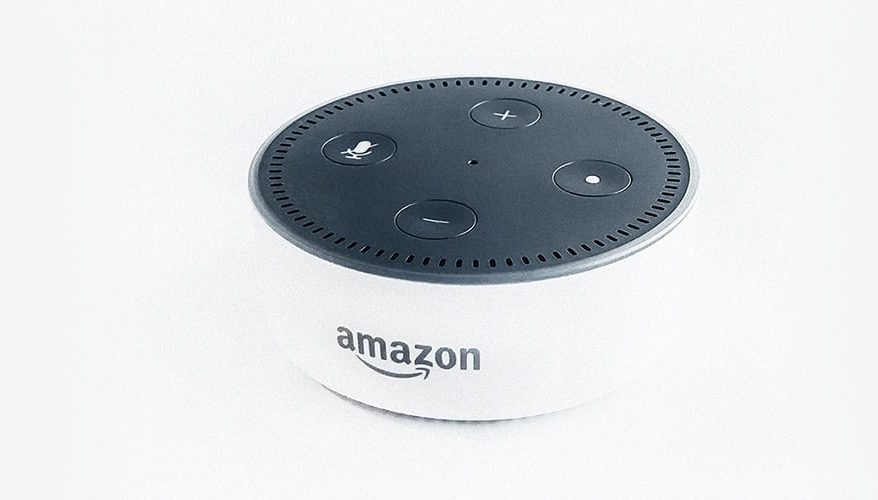
Voice recognition technology has become a part of our everyday lives, and with the increasing popularity of home assistant devices, it is more familiar than ever. Predictions indicate that voice technology will soon be common place in our workspaces, too.
Of course, voice recognition technology is nothing new. There have been key developments throughout the decades, as voice recognition evolved to today’s recognisable iteration
The Beginning
In 1939, The Voder was demonstrated at the World Fair in New York City. It was developed to synthesise human speech by imitating the effects of the human vocal chords, operated by selecting one of the two basic sounds via pedal bar.
1952 saw Bell Labs design the Audrey. Capable of understanding a small selection of spoken digits, the Audrey could distinguish between zero and nine. “Audrey could recognise the sound of a spoken digit – zero to nine – with more than 90% accuracy”
IBM demonstrated the Shoebox at the 1962 Seattle World Fair. The Shoebox could understand up to 16 spoken words in English. This technology was operated by speaking into a microphone, which then converted sounds into electrical impulses.
“Our efforts to communicate with and control machines, have resulted in a voice recognition machine which is capable of controlling an adding machine.” William C. Dersch, IBM Engineer and ShoeBox Developer
In 1971, IBM invented the Automatic Call Identification System, enabling engineers to talk to and receive spoken answers from a device, paving the first steps for the speech recognition.
In 1976, after five years of research by DARPA, The Harpy was developed by Carnegie Mellon, this technology was able to understand 1,011 words.
By the early 1980s, voice recognition began making great leaps towards greater viability. A technique called Hidden Markov Model was used, allowing voice recognition machines to more accurately identify speech. Around this time, IBM began work on Tangora, a technology able to identify 20,000 spoken words
In the mid 1980s, voice recognition made its way to children’s toys, with Teddy Ruxpin (1985), Pamela the Living Doll (1986) Talking Micky Mouse (1986), and many more bringing speech recognition into our homes.
By 1990, speech recognition had reached the workplace with Dragon Dictate, via Windows PCs. The 90s trend for speech recognition at work continued – Apple launched Speakable Items in 1993, a built-in controlled software for their computers. 1993 also saw the introduction of the Sphinx-II, the first large vocabulary continuous speech recognition system.
A few years later, in 1996, IBM launched MedSpeak – the first commercial product capable of recognising continuous speech.
“In 10 years I believe that we’ll not only be using the keyboard and the mouse to interact, but during that time we will have perfected speech recognition and speech output well enough that those will become a standard part of the interface.” Bill Gates speaking in 1997
In 2002, Microsoft integrated speech recognition technology into their office products, while 2006 saw The NSA using speech recognition to isolate keywords when analysing recorded conversations. Google launched GOOG-412 in 2007 a telephoned directory service that paved the way for their other voice recognition products.
The rise of AI and personal assistants
In the last few years, voice recognition software has been enriched by the power of machine learning, developing an ‘intelligence’ that was previously unprecedented. In 2008, Google launched the Voice Search App for the iPhone, while Siri was introduced to the world in 2011, giving consumers their very own digital personal assistant. This marked a change for mobile tech companies, as voice recognition enabled users to control their devices more efficiently than ever before.
“Innovation should start with insight” – Director Product Strategy & Design at Condeco
Between 2014 and 2017, the race to the top for voice recognition products intensified. Microsoft introduced Cortana and Amazon gave us the Echo, a voice-controlled speaker powered by Alexa. In early 2018, Condeco demonstrated Alexa integration with Condeco room booking technology at the Workplace Innovation Forum, bringing the power of voice integration technology to the modern-day office.
Comscore projects “50% of all searches will be voice searches by 2020.”
The possibilities of AI and machine learning initiatives suggests that voice integration has a bright future ahead, and that voice integration technology may soon be closer to the heart of the modern workplace.



